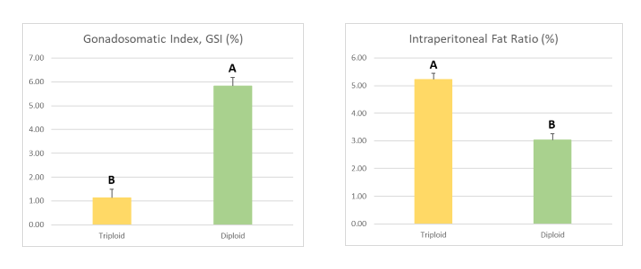PRODUCTION OF TRIPLOID SUNSHINE BASS BY HEAT-SHOCK
Sunshine bass are an important food fish raised in US aquaculture. Spawning of these hybrid striped bass is done by manual fertilization of female white bass eggs with male striped bass sperm. The industry grows these fish to ~1.5 to 2.5 lbs over ~1.5 to 2 years, during which time the females can become fertile and produce eggs. This is a major problem in the industry, since producers usually sell these fish whole. Loss in weight due to expulsion of eggs caused by handling stress often results in lower market appeal. Therefore, the industry needs a way to produce sterile (triploid) fish.
In this study, triploidy was induced through temperature shock applied to the embryo shortly after fertilization. We chose a range of temperatures and times post-fertilization to shock the eggs during initial trials. Larvae produced were checked for triploidy using a flow cytometer. Based on these data, we chose the highest triploid rates from the cold- and warm-shock treatments for a commercial-scale trial.
There were few survivors in the cold-shock treatment and none of these were triploid (verified using a Coulter Counter). Triploidy of the warm-shock treatment was 7% (66 fish). Triploids and an equal number of diploid controls were raised in flow-through tanks until spring spawning 2020 to verify maturation/gamete production vs diploid fish. Average growth rates were similar. Most triploids had undeveloped gonads; 5 were obvious males and had well developed testes; 9 were presumptive females and had grainy ‘ovaries’, only 1 had developed eggs (~100). Triploid condition factor, gonadosomatic index (below) and intraperitoneal fat ratios (below) were significantly different from the diploid controls. The hepatosomatic index and muscle ratio were not significantly different.
